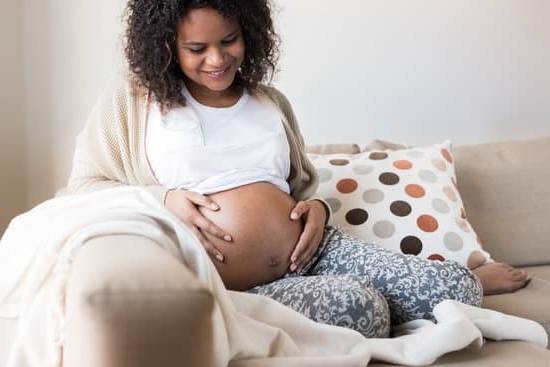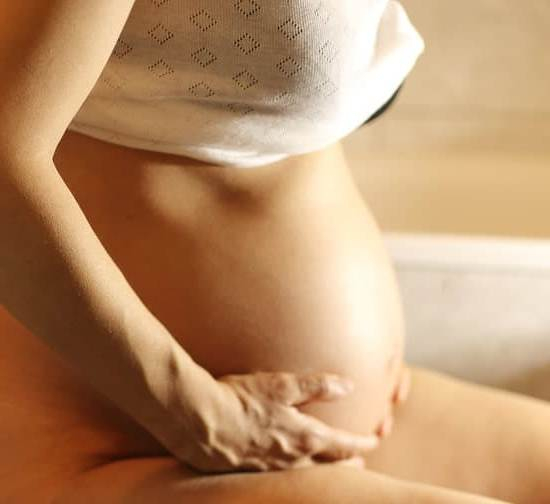Introduction
The sound of a baby’s heartbeat has long been associated with the miracle of life. It is only natural for expecting parents to wonder when this sound occurs during pregnancy. Understanding more about when does the heart start beating during a pregnancy can help provide assurance and peace of mind.
Early fetal development marks the beginning of the process in which a baby’s vital organs form. Around the fifth week after conception, an embryo’s basic structures, including its heart, lungs, digestive system, and brain have started to come together and form these important organs. At six weeks gestation, it is believed that an embryo’s heart will begin pumping blood around its body and start producing a recognizable heartbeat.
This early stage in embryonic development is called the embryonic period and lasts until 10 weeks gestation; from 10-27 weeks gestation is known as the fetal period—during this time babies will experience rapid growth throughout all their physical systems as well as further developments in their internal structures such visceral organs like the heart. It is during this fetal period that every organ matures enough to finally enable them to function at full capacity for life outside the womb.
Not only does a baby’s heart develop within these first 27 weeks but so too does other vital organ systems such as circulatory, respiratory, skeletal, muscular and reproductive systems—all fully developed before birth begins occur at 37-39 weeks gestation in average length pregnancies.
Thus it can be said that while an embryos’ heart may begin producing sound waves detectable through ultrasounds approximately 6-7 weeks post conception—it is not until late into their third trimester (in some cases even earlier) that babies’ hearts mature enough to be able to perform all its basics functions publicly; giving off a clear signal of vitality and strength through rhythmically swishing sounds heard clearly through ultrasounds or listened to with special Doppler technology used mainly by doctors to monitor your embryo or fetus during prenatal visits.
Overview Of The Pregnancy Phases
Pregnancy is broken into three distinct phases: the first trimester, the second trimester and the third trimester. During each of these times, different events occur within the body to help create an environment for the growing fetus.
The first trimester starts on the first day of your last period and ends at 12 weeks gestation. This time period is where a lot of development occurs as cells divide, organs start forming, and your baby’s heart starts beating. In general, a pregnant woman can expect to feel tired, experience morning sickness and have mood swings.
The second trimester begins at 13 weeks if you’ve had an ultrasound or sonogram confirming pregnancy, and continues until 26 weeks when the third trimester begins. During this phase, your body will begin to expand as your fetus grows. You may also notice that you feel better – there’s less morning sickness than during the first trimester and you’ll likely have more energy after developing a pattern of sleeping and eating better.
For most women, their baby’s heartbeat can be heard with a fetoscope (or “doptone”), a hand-held device used by midwifes and medical professionals, typically around 10 to 12 weeks of gestation. However, some women may not hear it until 14 or 16 weeks gestation using either methods mentioned above or care provider may confirm it with an ultrasound technology in early pregnancy checkups.
Unpacking The Timeline Of Fetal Development
The timeline of fetal development can vary slightly from pregnancy to pregnancy, but most fetuses start their hearts beating around the fifth week of gestation. At this point, the embryo is about 3mm in size and has already developed major systems such as the nervous, muscular and circulatory systems. During this time, the heart will cease and restart its pattern several times as it becomes a fully functioning organ. By eight weeks gestation, the heart rate has stabilized at 140 beats per minute and will typically remain there throughout the remainder of your pregnancy. During these early weeks in utero, your baby’s heart is responsible for providing oxygen-rich blood to their major organs so that they can continue growing at a fast pace. As you approach the end of your first trimester and through the second trimester, your baby’s heart continues to beat faster than yours until birth when it will be beating at roughly double an adult’s rate. Your baby’s heart is truly incredible as it’s been rapidly developing since soon after conception!
A Deeper Look At The First Trimester
The first trimester of a pregnancy is an incredibly important period in development, as it marks the beginning stages of fetal growth and development. During this period, the most noticeable sign of pregnancy is the heart beating. This normally occurs around week 6-7 of gestation.
Prior to this, during weeks 4-6, the developing unborn baby starts to form organs while its neural system begins the journey to become a conscious being. At this point, major changes occur with regards to cellular formation and the organization fo tissue and organs. Within a few weeks, blood vessels for circulation begin taking shape which is essential for cell nourishment – these continue to develop throughout week 7.
During week 8-9 of gestation, cells begin to form specialized structures such as muscles as well as bones that have started to harden. The heart itself also continues to develop at such a critical stage, with valve dividing chambers from one another or budded with an intricate portion on its walls that will eventually aid in generating electrical signals known as impulses – which pumps blood throughout your body – it truly is amazing how much happens in those early stages!
By week 10, the fetus fully takes on human characteristics including basic facial features like two eyes and one twenty strands. It’s remarkable what’s achieved by the end of this period considering it all began with just a tiny throbbing heart found at about week 6 of gestation!
What Happens As The Pregnancy Continues
The heartbeat of a growing fetus can usually first be detected between 6 and 8 weeks of pregnancy during an ultrasound. At this point, the baby’s heart is already completely formed and beating at a rate of around 80 to 220 beats per minute.
As the pregnancy continues, the baby’s heartbeat will continue to increase in speed. By 16-20 weeks, the fetal heartbeat should reach its peak of 150-170 beats per minute on average. The baby’s heart rate will start to gradually slow down as they approach full-term (37-40 weeks). Towards the end of pregnancy, their heart rate will typically range between 110-160 beats per minute. Additionally, growth milestones such as the ability to hear and swallow, movement and other activities –all regulated by a healthy heart – will start to occur over time as well.
Exploring the Different Ways Of Detecting The Fetal Heartbeat
The fetal heartbeat typically starts around the fifth or sixth week of pregnancy, as blood and oxygen are circulated from the placenta to the fetus. It is important to note that, due to individual differences, this can vary above or below this timeframe. The fetal heartbeat can be detected in several ways. Most commonly, it is detected by a Doppler Ultrasound at a doctor’s office. During this procedure, high frequency sound waves are used to capture a visual image of the fetus and the heart rate theoretically appears as flickering on the screen.
Alternatively, an external fetal monitor may be used. This device uses transducers strapped onto the abdomen of the mother which allow her to hear her baby’s heartbeat through headphones or amplified speakers connected to an electronic fetal monitoring system at varying intervals during labor and delivery. However, due to its intrusive nature, internal monitors like scalp electrodes which attach directly to the baby’s head via vacuum pressure are gaining more popularity for use during labor and delivery instead of external monitoring systems.
For those who prefer non-invasive methods for detecting a fetal heartbeat, fetoscopy might be an interesting option. Fetoscopy allows doctors to insert a thin tube in order to observe inside the uterus and track hormone levels and development as well as listen directly into the womb with specifically designed instruments such tools for detecting heartbeats. Finally there is also handheld Dopplers; compact ultrasound devices popularly used by midwives that enable mothers-to-be (or their loved ones) to listen into their baby’s heartbeat in the comfort of their own home though it requires patience due to its low sensitivity compared with clinical standard devices found at hospitals or doctors offices.
Understand the Different Ways To Monitor The Fetal Heartbeat
When a woman is pregnant, the fetal heart begins to beat at around 6-7 weeks of pregnancy. The heartbeat strengthens and can usually be detected by a Doppler device, such as an obstetric ultrasound, after about 8-10 weeks of pregnancy. Some specialized cardiotocography (CTG) devices are able to monitor the fetal heart rate from early in the second trimester but these should only be used when the woman’s doctor considers it necessary. The most common method for monitoring functions of the fetal heart is through ultrasound imaging which can detect the movement and rhythm of the fetus’ over time. This ultrasound imaging allows for accurate evaluation of any changes in fetal heart rate that may put it outside of normal range. Additionally, with modern advances in medical technology, there are now monitoring belts placed around a mother’s abdomen or an external fetal scalp electrode that measure and record contractions and fetal heart rate during labor. These methods allow healthcare providers to monitor both maternal and fetal well being during delivery, which can be invaluable in providing safe obstetric care.
Establishing An Estimate Of When You Can Hear The Fetal Heartbeat
The fetal heartbeat can usually be detected at around 6 to 7 weeks in most pregnancies, but this can vary. An ultrasound or Doppler machine may be used to pick up the sound of the heartbeat, which will usually be around 120-160 beats per minute. Some healthcare providers may prefer to wait until 10-12 weeks gestation when the heart can more easily be detected in order to confirm pregnancy. However, a specialized transvaginal ultrasound can generally detect a heartbeat earlier and reliably diagnose a viable pregnancy. This ultrasound is different from traditional abdominal ultrasounds. It is done vaginally and the wand is placed closer the developing baby to distinguish heartbeats at an earlier stage and with greater accuracy than an abdominal scan. Knowing when you can hear your baby’s beating heart is one of the most exciting parts of pregnancy!
Complications Which May Delay Detection
The human heartbeat typically begins around week 6 or 7 of pregnancy, although it can start as early as week 5. This is made possible by electrical signals generated by the developing embryo which cause a steady rhythmic contraction of the muscle tissue of the heart. This is known as fetal cardiac activity.
Although the majority of pregnancies show detectable fetal cardiac activity at 6 or 7 weeks, there are certain conditions or complications that can delay detection. These include obesity, maternal abdominal scars, mothers with an increased BMI (body-mass index), performing ultrasounds too soon after conception, and twin or multiple pregnancies. Factors such as maternal age and gestational age have also been associated with slower fetal cardiac activity detection. If any of these issues are present during a pregnancy ultrasound than further testing may be recommended in order to confirm robust cardiac activity within the developing fetus.
Final Considerations
The heartbeat of the baby during pregnancy can start as early as six weeks gestation. It is made by the electrical activity generated by the fetal heart muscle during its contraction, and it can be detected using Doppler Ultrasound. However, it is very difficult to pick up the fetal heart rate prior to 10 weeks gestation. At this stage in development, a fetus’s heart rate should be between 90 to 110 beats per minute. As an embryo develops, it becomes easier to detect its heartbeat due to increased muscular clarity that occurs as well as thickening of its tissue walls.
With improved technology over the years, detecting a heartbeat has become much easier and more accurate earlier in a pregnancy. This is especially important for doctors and healthcare practitioners who must monitor the health of a developing fetus on a regular basis throughout the entire pregnancy. With early detection, any pre-existing conditions such as congenital birth defects or chromosomal disorders can be potentially avoided through prompt medical intervention. Additionally, monitoring fetal heartbeat helps reduce complications from undetected ectopic pregnancies or multiple fetuses which could lead to further deleterious health implications for the mother and baby alike if not caught soon enough. Early detection also gives parents more time to access their options and decide what course of action best fits their situation whether that be palliative care, termination or other available treatment options depending on individual case scenarios. All in all, while it takes some effort to understand when exactly heartbeats first appear in fetuses, being able to detect one early ensures that pregnant women are aware of any existing risks and have adequate time to yield optimal outcomes for themselves and their babies regardless of what those outcomes may look like.

Welcome to my fertility blog. This is a space where I will be sharing my experiences as I navigate through the world of fertility treatments, as well as provide information and resources about fertility and pregnancy.





